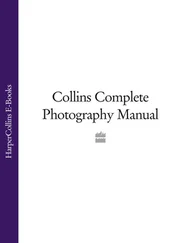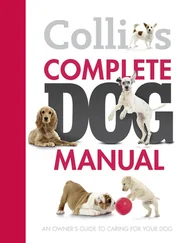Make sure you bring pole splints or extra poles with you in case a pole breaks.
Make sure that you have the right tent stakes for your environment. Ever try to hammer one of those narrow wire tent stakes into rocky soil and watch it bend at a right angle? Lightweight/strong steel or titanium stakes are much better than the cheap aluminum ones. In soft surfaces like sand or snow, you will need a stake with a much greater surface area (especially for sand). In snow, you can create a “dead man” by tying your guyline to a branch and then burying the branch in the snow and packing the snow down on top. When the snow sets, the dead man will be solidly fixed. (You may have to chop it out when it’s time to go.) In sand, fill a stuff sack with light bulky items, tie your guyline to it, and bury it.
Use a tent ground sheet, a space blanket, or a tarpaulin to help protect your tent floor from rips and tears (better to put a hole in the cheap tarpaulin than your expensive tent).
Always stake your tent down if you are going to be in windy areas or will be leaving your tent during day excursions.
Avoid cooking in a tent. The material most tents are made of is flammable, and the water vapor from cooking leads to extensive condensation inside the tent. Carbon monoxide gas released from a burning stove in a confined space like a tent can lead to suffocation and death. (See “ Carbon Monoxide,”.)
 GOING ULTRALIGHT – SHELTER
GOING ULTRALIGHT – SHELTER
If you are going ultralight, the first question is, Do you need a shelter at all? If you are on a trail like the Appalachian Trail designed for through-hikers, there will be shelters at hikeable mileages for the entire trip. Of course, you can’t be sure that you can always make the mileage, so you should carry a basic tarpaulin or bivy sack as an emergency shelter, but you don’t need to carry a full tent.
If you are bringing a shelter, there are a number tarpaulins that weigh under a pound (454 grams) and some superlightweight tarpaulins weighing less than 8 ounces (226 grams). Ultralight tarpaulins are often made of silicon-impregnated nylon (sil-nylon). This is one of those lightweight fabrics that takes care to keep from puncturing or tearing it. There are also ultralight tents from companies like Big Agnes, GOLITE, Mountain Hardware, MSR, and Sierra Designs that weigh under 2 pounds (900 grams).

COOKING EQUIPMENT
Basic cooking gear is listed in the general equipment list on pages, but here are a few necessary items:
Pots It’s best to bring at least two pots. A pot set that nests is easiest to carry. The pot size depends on the size of your group: for one to three people, use a 1.5-liter and a 2.5-liter pot. For groups of six, try a 2-liter and a 3-liter pot, and for eight or more, go with at least a 2-liter and a 4-liter. Pots should have lids that seal well. Flat lids allow you to build a small fire on top of the lid for baking. Having a rim on the outside of the pot is essential for picking it up with a pot-gripper. Stainless steel pots weigh a little more than aluminum but will last longer. There is a great debate about pots with nonstick coatings. The nonstick coating makes it easier to clean the pots, but you can’t use harsh abrasives to clean them, which eliminates some of the best natural cleaning materials, such as sand.
Frying pan One per trip is usually plenty. Choose your size based on the size of your group (or how big you like your pancakes). Frying pans are generally available in 8-, 10-, and 12-inch models. Using a frying pan with a cover will reduce your cooking times. A pot cover that fits your frying pan saves weight.
Utensils Lexan plastic utensils are basically indestructible. Be careful cleaning them. Harsh abrasives can create scratches that will hold dirt and bacteria.
 GOING ULTRALIGHT – COOKING GEAR
GOING ULTRALIGHT – COOKING GEAR
Titanium is lighter than either steel or aluminum and just as durable. You can cut down on weight by using titanium cooking pots, cups, fry pans, and utensils. The only drawback is that titanium items are significantly more expensive. For solo hikers, bring only one small pot and lid. A spoon is the only utensil you’ll probably need.
BACKPACKING STOVES
There are three basic types of backpacking stoves based on what they burn: liquid fuel, compressed gas in a canister, and stoves that use solid fuels like a fuel pellet or wood. Most backpackers rely on liquid fuel stoves.
Liquid Fuel Stoves burn Coleman fuel (a.k.a. white gas), kerosene, or alcohol. Pro: Fuel readily available (alcohol and kerosene available worldwide). Con: Require more maintenance. Some stoves don’t simmer well. Alcohol doesn’t burn well at high altitude (over 7,000 feet or 2,133 meters).
Compressed Gas Stoves burn butane, isobutane, or propane. Pro: Easy on and off. Low maintenance. Easy to control temperature. Both the stove and the fuel canister are lighter than liquid fuel stoves. Con: Don’t work as well at colder temperatures. Difficult to tell amount of fuel left. Disposal of pressurized canister. Butane doesn’t burn well at high altitude (over 7,000 feet or 2,133 meters).
Solid Fuel Stoves burn flammable pellets or wood. Pro: Easy on and off. Practically zero maintenance. Con: Pretty much either off or on, hard to control temperature. Small, hard to use for large group cooking.
How Petrol/Kerosene Liquid-Fuel Stoves Work
The fuel is stored in a separate tank. In most cases, this tank uses a pump to help pressurize the stove. The tank should be filled only to the ¾ point, leaving some air in the tank. The pump forces air through a one-way valve into the tank, increasing the pressure inside. Opening the fuel flow valve allows the pressurized liquid fuel to flow from the tank through the fuel line to the generator tube that passes over the stove burner and back to the base of the stove, where it comes out a small opening called the jet and into the priming cup. Initially, vent only a small amount of fuel into the priming cup, then shut off the fuel flow valve. When you light this small amount of fuel, it will heat up the generator tube. This process is known as “priming the stove.” It can also be accomplished by using a separate priming source such as alcohol or priming paste. Once the generator tube is hot, the fuel flow valve can be opened and the stove burner lit. The pressurized fuel from the tank flows through the heated generator tube, where it is vaporized. The fuel that now flows through the jet is vapor. It strikes the flame spreader on the burner and ignites. The flame spreader redirects the flame from a single, vertical “candle” flame to a wider flame for more efficient heating. When the stove is properly primed, you should see a blue flame similar to that on a gas range. If the flame is yellow or orange, it means that the fuel is not being completely vaporized in the generator. As the generator heats up further, it may begin to run properly, or you may have to turn off the stove and reprime it. (See pagefor detailed sample instructions.)
Lighting Other Stoves
Alcohol Stoves Alcohol stoves don’t require any priming. Because alcohol doesn’t have the explosive combustible properties of petrol, it doesn’t need to be vaporized in order to burn. You just pour the alcohol into the burner container and light it. You can burn either denatured alcohol or grain alcohol (ethanol). In cold temperatures you may have to warm up the alcohol (by putting it next to your body) before lighting.
Читать дальше

 GOING ULTRALIGHT – SHELTER
GOING ULTRALIGHT – SHELTER











